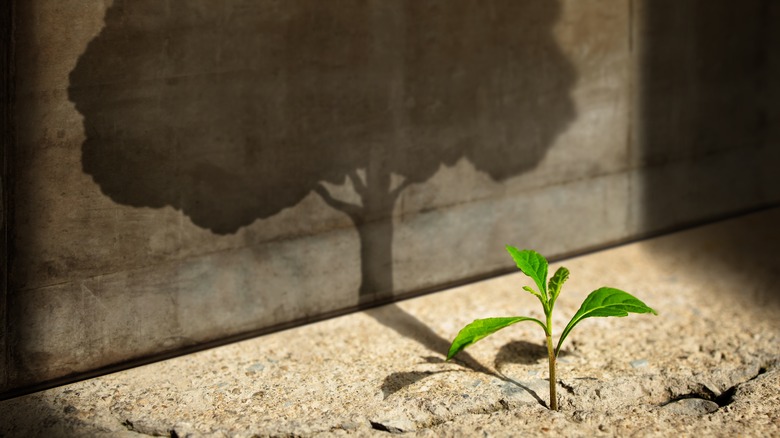Expert Reveals The No. 1 Way People Misuse The Enneagram - Exclusive
Personality typing systems are helpful tools for assessing our strengths and shortcomings. Like our astrological signs, we may identify with some parts of our type's description but realize that it's difficult to capture an entire person in a single label. The Enneagram is a helpful personality test and categorizing system that has nine types with unique monikers. Like the Zodiac has sun, moon, and rising signs, the Enneagram types can have "wings," or neighboring types with whom they share overlapping characteristics. The Enneagram also tracks what types we might resemble at our best, and this positive growth is called "integration." Our negative behaviors or coping mechanisms may show up through other types as "disintegration."
Despite its flexibility, the Enneagram can still feel over-structured for a particularly mutable personality. We spoke with the CEO of Truity – an Enneagram testing site with a broad range of personality typing resources — about the ways we can correctly and incorrectly use the information gained from the Enneagram. Molly Owens helps users through the lens of counseling therapy and psychology, combined with her expertise in the Enneagram and the Meyers-Briggs 16 personality typing system. In an exclusive interview, Owens told The List how to get the most out of the Enneagram and avoid common personality typing pitfalls.
Using the Enneagram the right way can lead to growth
In her interview with The List, Truity's CEO Molly Owens shared some helpful insights into the best applications of the Enneagram, and how they can result in direct improvements in your life. She told us, "The best way to use the Enneagram is to allow it to point you toward areas of growth."
Even the parts of the Enneagram that indicate our individual challenges can be useful tools. "The Enneagram is so focused on fears and beliefs that may limit us," she shared. "It can be incredibly illuminating to start to understand that those core drivers can be questioned and reimagined so that we can open up new ways of being."
Focusing on our limiting beliefs as potential opportunities to reexamine our self-image can be a fruitful practice. However, placing too much emphasis on our innate fears may give them more power in daily life than they might otherwise have. The Enneagram is split into thirds by Centers, which each have a Dominant Emotion, per The Enneagram Institute: types Nine, One, and Two share anger; types Three, Four, and Five feel shame; and types Six, Seven, and Eight experience fear. But Owens argues that taking the power away from these core motivators and replacing them with more positive motivators can lead to greater success while using the Enneagram.
A superficial understanding of the Enneagram may point us in the wrong direction
Molly Owens, CEO of Truity, also shared that new Enneagram users may feel limited by their type and its associated strengths and challenges. "Unfortunately, using the Enneagram with only a superficial understanding can lead people to feel as if they're being pigeonholed by their type — that they're destined to be driven by these core fears and beliefs," Owens said. Digging deeper into the Enneagram and its complex history, potential for misidentification, and variable type presentations can provide the nuanced understanding necessary to use the Enneagram in ways that best suit our needs and personal histories.
The Enneagram has a range of uses, but its ultimate goal is to subvert our internalized barriers and break through to communicate with our core selves. Owens told us that we can use the Enneagram to define our current state of being, as well as our childhood wounds, in the hopes of growing beyond our self-imposed limits. "In reality," she shared, "the goal is to shed light on these assumptions so that we can transcend them."


